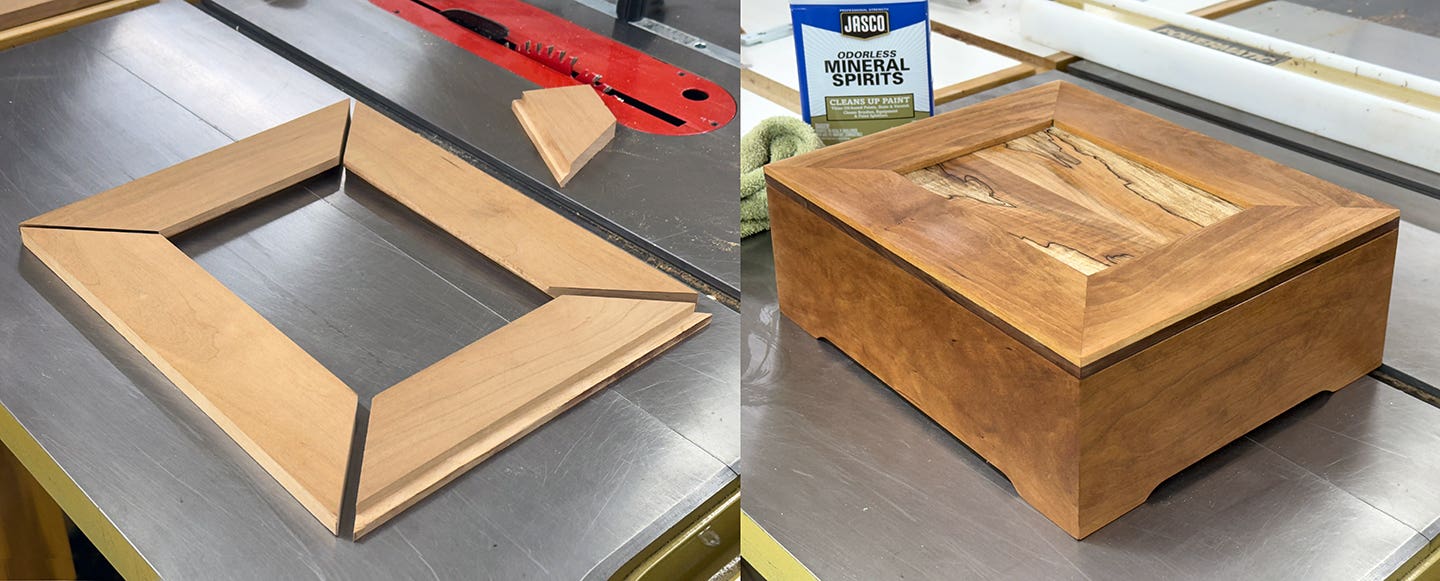Ahead of the curve and bent to succeed
With great sadness, it is my duty to report the death of Wendell Castle, educator, craftsman and innovator, on Feb. 20 at the age of 85.
It is with great sadness that I must report the death of Wendell Castle, educator, mentor and extraordinary innovator, on Feb. 20 at the age of 85.
As a tribute, I want to share excerpts of Brian Caldwell’s profile, published in the March 2016 issue of Woodshop News. Our coverage continues on Page 8.
Behind the thick, blue-rimmed glasses is a complex man who has been at the forefront of sculpture and furniture design for more than 40 years. His work has progressed through phases as he has built series after series of pieces, each group incongruous from the previous one. Whether it has been pure sculpture, bent or stack laminations, trompe d’oeil pieces or working with plastic, stone, or other materials, Wendell Castle has been ahead of the design curve throughout his illustrious career. He loves to be challenged and definitely lives for the next challenge. Anything less would be completely unacceptable.
“The one thing that I really think is wrong … is to just do it over and over again,” Castle noted. “I’m not one to find something that works and then just stay with it. I couldn’t do that. It would almost send me away from it if it had nice acceptability.”
But as his work grew and changed through the years, he has reached a comfort level with being known as a maker of art furniture.
“I think if you use the word art, very definitely that word has meaning. And whether it is art furniture maker or furniture as art, they both use the word art and all the meanings that go along with art. That is what I want my furniture to have: a meaning, whether it is a social statement or a statement about form relationships and vocabulary extensions, stretching of the meaning of furniture to go way [beyond] what furniture is in a traditional sense — a table, a chair, a cabinet.”
Castle received recognition at several shows in the early 1960s, especially the “Young Americans” exhibition in 1962 at the Museum of Contemporary Crafts in New York.
“I got almost instant recognition in Time Magazine and Newsweek, Life; it was in all those magazines in the mid 60’s. I would have work in shows, and coming from a sculpture background as opposed to people who have come from craft backgrounds, I think what you’re supposed to do is make something and sell it. That’s not so true from people who come from painting or sculpture. You’re not really expecting to sell anything. You’re really just trying to get some recognition for your work. And the idea of looking at the market and saying ‘well, I think people need this or that’ and making it; you don’t do that at all. You do almost the opposite — you look at what nobody could possibly want and attract some attention.”
He made a living from teaching at RIT, which allowed him to make spec pieces on the side.
One of Castle’s strengths has been his tremendous ability to draw.
“I think I had a great advantage in entering the furniture field that I could draw well, so I could draw something and then I could make it and look like the drawing. And I could imagine the three-dimensional form and draw it from many different views from just imagining it in my mind.”
Castle’s personal work during the 1960s centered on stack lamination. The technique was known in the sculptural world, but Castle was the first to apply it to furniture.
“It’s very satisfying to see the form emerging from this rough thing that is laminated up, dripping [glue] all over. As you carve away, the sculptural relationships begin to emerge. That’s satisfying.”
Although his roots remain in sculpture, furniture has found a permanent place in Castle’s heart. He states he has had a lot of good luck over the years, received many awards and all types of praise. Standing the test of time is really what is important, he added.
“I really kind of thought from the time I decided to take furniture seriously back in the 60s that I could make a real contribution there, where the sculpture maybe I could do something, but I don’t think I could be the best in the world. But I thought I could be the best in the world at art furniture.”
This article originally appeared in the March 2018 issue.







